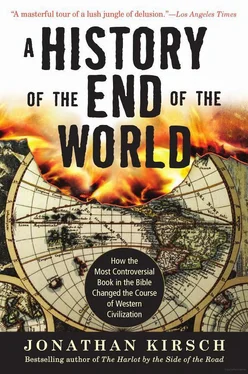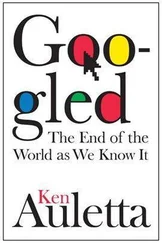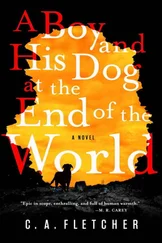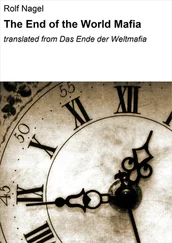25. Malone, Women and Christianity, 2:111, 112.
26. Scivias , quoted in McGinn, Visions of the End, 101.
27. Richard K. Emmerson, “Introduction: The Apocalypse in Medieval Culture,” in Emmerson and McGinn, Revelation, 298.
28. Bernard McGinn, “Apocalypticism and Church Reform: 1100–1500,” in McGinn, Apocalypticism, 83–84.
29. Bernard McGinn, “Apocalypticism and Church Reform: 1100–1500,” in McGinn, Apocalypticism, 83.
30. Quoted in Robert E. Lerner, “Millennialism,” in McGinn, Apocalypticism, 341.
31. Quoted in David Burr, “Mendicant Readings of the Apocalypse,” in Emmerson and McGinn, Apocalypse, 96.
32. Robert E. Lerner, “The Medieval Return to the Thousand-Year Sabbath,” in Emmerson and McGinn, Apocalypse, 65–66.
33. Peter John Olivi, Commentary on Revelation, quoted in McGinn, Visions of the End, 208–09.
34. Marjorie Reeves, “Dragon,” in Drane, Revelation, 31.
35. Paraphrased and quoted in Robert E. Lerner, “Millennialism,” in McGinn, Apocalypticism, 352.
36. Quoted in Gian Luca Potestà, “Radical Apocalyptic Movements in the Late Middle Ages,” in McGinn, Apocalypticism, 125 (adapted; “The world will be filled with indignation…”); and Robert E. Lerner, “Millennialism,” in McGinn, Apocalypticism, 352 (adapted; “Many princes, nobles and mighty ones…”).
37. Roberto Rusconi, “Antichrist and Antichrists,” in Apocalypticism, 306.
38. Robert E. Lerner, “Millennialism,” in McGinn, Apocalypticism, 353, 354.
39. Robert E. Lerner, “Millennialism,” in McGinn, Apocalypticism, 351–52.
40. Robert E. Lerner, “Millennialism,” in McGinn, Apocalypticism, 332 (adapted). (Lerner is referring here specifically to the so-called Tiburtine Sibyl.)
41. Quoted in McGinn, Visions of the End, 218–19 (adapted).
42. Quoted in McGinn, Visions of the End, 220–21.
43. Quoted in Richard K. Emmerson, “Introduction: The Apocalypse in Medieval Culture,” in Emmerson and McGinn, Apocalypse, 318–19.
44. Quoted in Malone, Women and Christianity, 2:131–32 (adapted).
45. Malone, Women and Christianity, 2:177, 178.
46. Rev. 3:8 (KJV).
47. Rev. 7:2, 10:1, 10:6 (KJV, RSV).
48. Paraphrased in Gian Luca Potestà, “Radical Apocalyptic Movements in the Late Middle Ages,” in McGinn, Apocalypticism, 120.
49. Quoted in Malone, Women and Christianity, 2:211.
50. Yarbro Collins, Crisis and Catharsis, 159.
51. Rev. 2:19, 2:20 (RSV; adapted).
52. Quoted in McGinn, Visions of the End, 19. (The fragment from Heracleitus is preserved in the writings of Plutarch.)
53. McGinn, Visions of the End, 50.
54. McGinn, Visions of the End, 50.
55. Bernard McGinn, “Apocalypticism and Church Reform: 1100–1500,” in McGinn, Apocalypticism, 92.
56. Quoted in McGinn, Visions of the End, 169.
57. Roberto Rusconi, “Antichrist and Antichrists,” in McGinn, Apocalypticism, 303.
58. Quoted in McGinn, Visions of the End, 190 (adapted).
59. McGinn, Visions of the End, 188.
60. Robin Barnes, “Images of Hope and Despair: Western Apocalypticism: ca. 1500–1800,” in Apocalypticism, 154.
61. Rev. 9:1 (KJV).
62. Quoted in McGinn, Visions of the End, 150.
63. Rev. 16:12 (KJV).
64. Robert E. Lerner, “Millennialism,” in Apocalypticism, 343.
65. Richard K. Emmerson, “Apocalyptic Themes and Imagery in Medieval and Renaissance Literature,” in Apocalypticism, 406.
66. Robin Barnes, “Images of Hope and Despair: Western Apocalypticism: ca. 1500–1800,” in Apocalypticism, 156. (Raimarus’s calculations are “reckoned from 1596”).
67. Richard K. Emmerson, “Apocalyptic Themes and Imagery in Medieval and Renaissance Literature,” in Apocalypticism, 402 (adapted).
68. Rev. 20:12 (KJV; adapted).
69. Penn Szittya, “Domesday Bokes: The Apocalypse in Medieval English Literary Culture,” in Emmerson and McGinn, Apocalpyse, 374, 375.
70. Quoted in Roberto Rusconi, “Antichrist and Antichrists,” in Apocalypticism, 298.
71. Geoffrey of Monmouth, The History of the Kings of Britain, quoted in McGinn, Visions of the End, 183.
72. Henry IV, Part 2, act 5, scene 3, lines 40–45, quoted in in Richard K. Emmerson, “Apocalyptic Themes and Imagery in Medieval and Renaissance Literature,” in Apocalypticism, 426.
73. Quoted in Richard K. Emmerson, “Introduction: The Apocalypse in Medieval Culture,” in Emmerson and McGinn, Apocalpyse, 324.
74. Rev. 12:4 (RSV).
75. See, e.g., Ronald B. Bond, “Whore of Babylon,” in Drane, Revelation, 54.
76. Dante, Inferno, 19:106–8, quoted in Richard K. Emmerson, “Apocalyptic Themes and Imagery in Medieval and Renaissance Literature,” in Apocalypticism, 431–32.
77. Dante, Purgatorio, 33:43, quoted in Ronald B. Herzman, “Dante and the Apocalypse,” in Emmerson and McGinn, Apocalpyse, 401.
78. Quoted in Schüssler Fiorenza, Apocalypse, 8.
79. Bernard McGinn, “Revelation,” in Alter and Kermode, Literary Guide, 529.
80. Quoted in McGinn, 529 (adapted).
81. Quoted in Roberto Rusconi, “Antichrist and Antichrists,” in McGinn, Apocalypticism, 311 (“[T]he true Antichrist…”), 312 (“I do not know…”).
82. “Against Hanswurst,” quoted in Ronald B. Bond, “Whore of Babylon,” in Drane, Revelation, 54.
83. Jean-Robert Armogathe, “Interpretations of the Revelation of John: 1500–1800,” in Apocalypticism, 187–88.
84. Rev. 19:13, 15 (KJV).
85. Quoted in Boyer, When Time Shall Be, 50.
86. McGinn, Visions of the End, 89.
87. Quoted in McGinn, Visions of the End, 92–93 (adapted).
88. Boyer, When Time Shall Be, 51.
89. Quoted in Boyer, When Time Shall Be, 55.
90. Quoted in Cohn, 237, 239, 247 (adapted).
91. Robin Barnes, “Images of Hope and Despair: Western Apocalypticism: ca. 1500–1800,” in Apocalypticism, 163.
92. Cohn, Pursuit of the Millennium, 271.
93. Cohn, Pursuit of the Millennium, 268 (adapted).
94. Quoted in Cohn, Pursuit of the Millennium, 272.
95. Cohn, Pursuit of the Millennium, 275.
96. Quoted in Cohn, Pursuit of the Millennium, 274.
97. Cohn, Pursuit of the Millennium, 278.
98. Gian Luca Potestà, “Radical Apocalyptic Movements in the Late Middle Ages,” in Apocalypticism, 133.
99. Tizio, “the Sienese chronicler,” quoted in Thompson, End of Time, 80.
100. Quoted in Van Paassen, Crown of Fire, 50.
101. Rev. 18:12–13 (RSV).
102. Quoted in de la Bedoyere, Meddlesome Friar, 28.
103. Robin Barnes, “Images of Hope and Despair: Western Apocalypticism: ca. 1500–1800,” in Apocalypticism, 145.
104. Quoted in Van Paassen, Crown of Fire, 63.
105. Quoted in Van Paassen, Crown of Fire, 114.
106. Quoted in Van Paassen, Crown of Fire, 178.
107. Quoted in Van Paassen, Crown of Fire, 180.
108. Quoted in de la Bedoyere, Meddlesome Friar, 34.
109. Van Paassen, Crown of Fire, 230.
110. Van Paassen, Crown of Fire, 230.
111. Van Paassen insists that only illustrated copies of Petrarch and Boccacio, featuring “miniatures of a salacious character,” were burned. Van Paassen, Crown of Fire, 234.
Читать дальше










